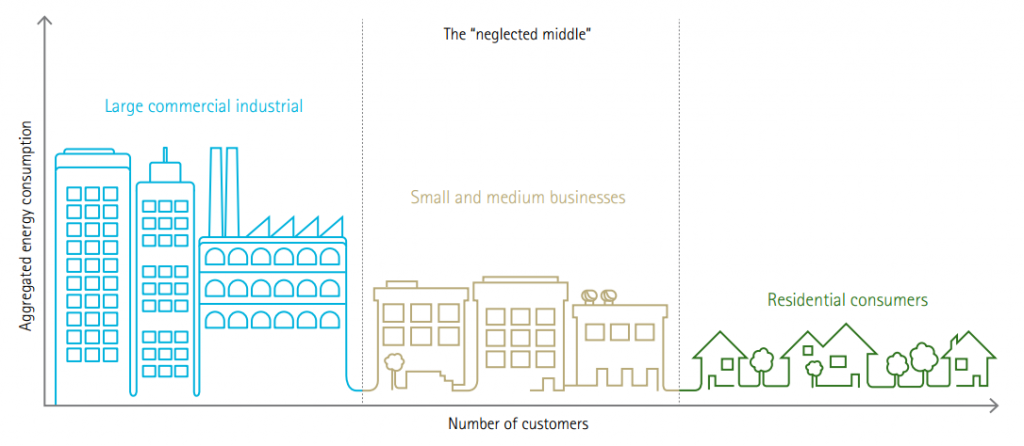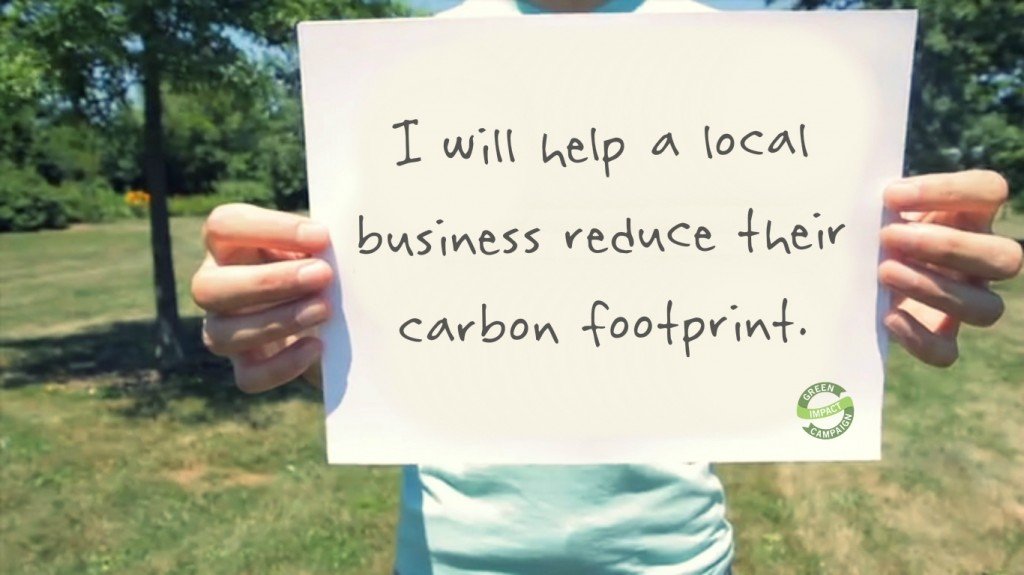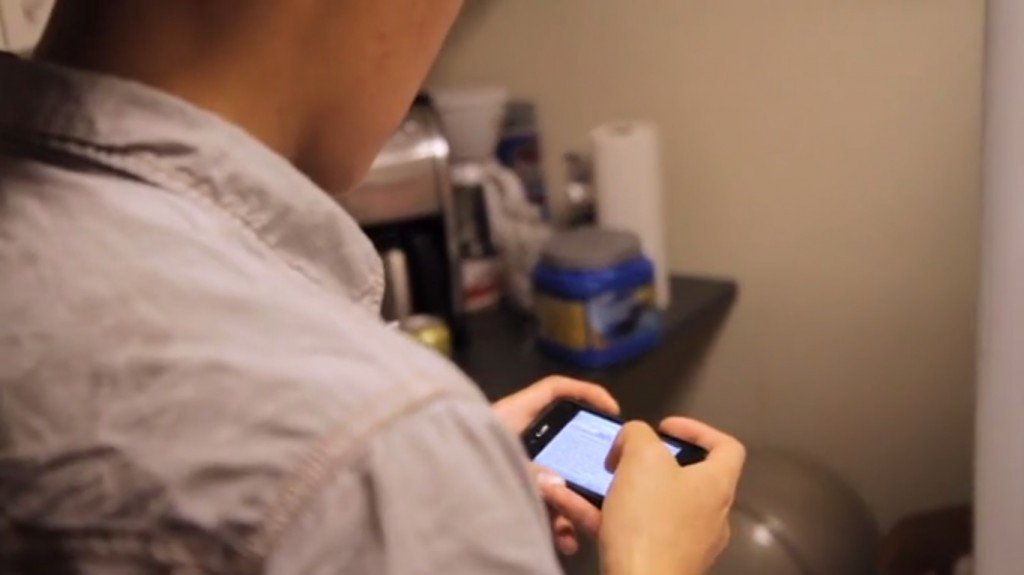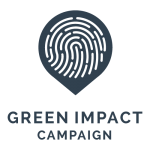
A brief overview of how and why Green Impact Campaign came to exist, as told by GIC Co-Founder, Daniel Hill.
There I was, sitting in yet another accounting class for grad school. I never liked accounting. The numbers always seemed to add up, but I couldn’t say the same for my personal interest.
As I sat there thinking about how great of a name “SOX” would be for my professor’s dog, I noticed my classmate, Dave, sitting next to me with his face pressed up against his computer screen. I couldn’t help but admire his attentiveness to the professor’s lecture, wishing that I found accounting as engaging as he did. Then Dave readjusted his screen and I saw the online chess match he was playing. Dave and I didn’t share a passion for accounting. But in the months that followed, we began to realize that we shared a common vision to create a movement to combat climate change and empower the next generation of climate leaders.
Chapter 1: My Introduction To Climate Change
For me, climate change was personal.
Throughout my childhood, my father worked for the government as a natural resources auditor. His job took him to every national park in the country and after every trip, we would sit down at the kitchen table and look at the stacks of photographs he took. Brilliant images of canyons, waterfalls, and forests. I quickly became fascinated by these parks and the environment. So much so that while my friends had posters of Shaquille O’Neal hanging up in their rooms, I had a poster of Yosemite Falls.
Then in high school, I had an unusual physics teacher. He taught us life skills, from changing a car tire to harvesting tomato plants, and educated us about real world issues like politics and social issues. Sometimes he even taught us about physics. One day, he spoke about this issue of climate change and the resulting environmental and health impacts, and it was the first time in my life that I felt that something I was passionate about was being threatened. I felt helpless in that moment. And it was in that helpless moment that I knew what I wanted to do when I grew up – find a solution to climate change.

Co-Founders David Hussey and Daniel Hill
In college, I went on to study Integrated Science and Technology with a focus in energy at James Madison University in Harrisonburg, VA and stuck around to earn my MBA, where I met Dave playing online chess.
When I met Dave in grad school, he was in the midst of starting a small business consulting company called Grindflow. Dave had an amazing vision and passion about small business. He would tell me that every small business had something to contribute to the world and it was his mission to figure out how he could help them by providing innovative web-based and technology solutions. At this time, I was a sustainability consultant working with large commercial buildings. I worked with property management companies to help them assess their current energy usage and help them implement ways to operate high-efficiency buildings through comprehensive energy audits.
Though our backgrounds were fairly different, we eventually both made the same observation – we need to help small businesses reduce their environmental impact.
Chapter 2: The $60 Billion Issue That No One Talks About
Dave and I began spending our class breaks and evenings discussing this concept of small businesses and the environment. Bouncing around ideas, doing research, and talking with other people, our discussions eventually led us to discover three key facts:
- FACT 1: Small businesses in the U.S. account for roughly $60 billion (with a ‘B’) in energy costs and are responsible for half a billion metric tons of carbon emissions every year.
- FACT 2: The average small business has the potential to cut energy consumption by 15-20% through simple, low-cost energy-efficiency upgrades.
- FACT 3: The average small business is doing nothing about it.
We didn’t get it. Why would a small business not take simple steps to cut their utility costs, become more profitable, and reduce their impact on the planet?
We soon realized that the problem wasn’t that small businesses didn’t understand the benefits of cutting their energy consumption. Instead, the real problem was that most small business owners just don’t know where to begin, whether it’s a lack of time, money, or expertise, they don’t know how to reduce their energy usage. So what could they do to figure that out? Typically, they have three options to learn where to begin: teach themselves, hire someone else, or do nothing. The more proactive business owners that are looking to educate themselves are usually met with generic, 250-page handbooks like ‘101 ways to green your business,’ where tips like “go solar” would open up an entire new set of research, time, and money. Those businesses that want to hire a company to help them become more sustainable are often turned away because they don’t have large enough budgets to be worth the energy service provider’s time. So most businesses go with the third option: do nothing.
But there was a bigger question that we couldn’t quite understand, why is no one discussing small businesses as being part of the solution to mitigate climate change? Fact 1: half a billion metric tons of carbon emissions every year. Fact 2: average business can cut their energy usage by 15-20% with simple, low-cost steps. Meanwhile, large commercial buildings are getting help from outside consulting firms or hiring CSOs (Chief Sustainability Officers) and residential homes are getting help from utility outreach programs and countless online home energy calculators. As a result, small businesses have become the “neglected middle,” falling in between the two in terms of size and energy consumption, with no one giving them the proper attention. It just didn’t make sense to us.

Image courtesy of Accenture New Energy Consumer Handbook 2013
We found out that the short answer is that no one knows how to help small businesses. There are so many small businesses (close to 8 million) with such varying characteristics in terms of how they use energy. No one seems to be able to address all of them in a cost-effective, scalable way. The only current outreach options that we found for small business owners were either limited, highly-localized outreach programs or organizations solely focused on providing a “green business” window decal in exchange for money (thanks greenwashing!).
We believed there had to be a solution. A way to provide EVERY small business with the custom, actionable information they needed to know where to begin in reducing their energy consumption. And we believed it could be done at no cost to the business.
Chapter 3: An Idea to Provide Free Energy Surveys For All

Our idea was simple. We wanted to provide local, small businesses with free energy surveys to help them identify custom ways to reduce their utility costs and environmental impact. No matter the industry, budget size, or building size, we wanted to provide this free service to all small businesses. But we wanted to do more than just help businesses. We wanted this to be a volunteer-powered movement, one that would empower students to be the driving force in helping these businesses and to later go on to impact climate change in their future careers. So we came up with a plan to train university students to help us conduct energy surveys and write up reports for the business owner. In 2010, we held our first training workshop for students at James Madison University in a cramped classroom on campus.
To put it modestly, it was a disaster.
Although the turnout was extraordinary for the first training session (~35 students), we neglected to acknowledge the fact that the typical college student schedule is anything but predictable and had all of two students be able to show up to the second session. So we decided to change our approach.
We were going to redefine the entire energy audit process. We’d streamline the service and automate much of the repetitive steps by developing a cloud-based technology tool. We’d automate things like writing report narratives and doing energy savings calculations by hand. Instead, we’d enhance the human-interaction elements such as conducting a building walkthrough and create a streamlined database of energy saving recommendations with factsheets and calculations.
With the help of a micro-grant from Valley 25x’25, countless impromptu cocktail napkin sketches, and some talented student volunteers, we spent six months creating the cloud-based tool that we soon began to call GEMS (Green Energy Management System). GEMS consists of two parts:

GEMS mobile survey and business report
1) A self-training, checklist style mobile-site that student volunteers use to answer simple yes/no questions as they walk through a business’s building (left), and
2) A web-based platform that automatically compiles and sends a report of recommendations and cost/savings estimates to the business owner, as well as provides the business with a comparison of their current energy usage to similar businesses and allows them to track their progress of implemented projects (right).
What would take 2-3 weeks and many hours of training could now be completed in 20-30 minutes and required zero training using GEMS. This tool didn’t just provide a custom list of generic recommendations, it provided them with concrete, actionable recommendations with quantitative estimates that spoke to the business’s budget and bottom line. We had done more than redefine the traditional energy audit service, we had created a virtual energy manager for small businesses.
And that’s when we met Net Impact.
Chapter 4: From Backyard Project to National Campaign
We joined the JMU Net Impact chapter in early 2011 and introduced our project to the other members, what we soon began calling the Green Impact Campaign. The first energy surveys conducted well exceeded our expectations. The first four small businesses discovered energy savings in the 20-25% range with over 20 different energy saving measures being recommended collectively. Meanwhile, students were becoming energy survey experts after conducting just two surveys. They were able to point out energy saving opportunities the minute they walked into the door without referencing GEMS. We quickly realized that we had created something that could easily work in other university communities.

Student volunteer using GEMS to conduct a free energy survey
We decided to bring our idea to Net Impact central with the hopes of getting other student chapters involved in the Campaign. Our (optimistic) vision was to have these multiple, local outreach movements adding up to make this unified, national movement. We spent that summer working with passionate, talented Net Impact associates to develop various guides and toolkits for other students around the country to easily launch Green Impact Campaign in their own community. At the end of the summer, we held our breath and crossed our fingers as the word was spread to other universities about this new “project-in-a-box” campaign.
It’s been three years since then.
In that time, students at more than 60 universities have gotten involved with the Campaign, nearly 200 small businesses have received energy surveys, and roughly 1.7 million kWh of annual energy savings have been identified (environmentally equivalent to taking about 150 cars off the road every year). We’ve had student volunteers land sustainability-related internships because of the skills gained during their involvement. We’ve seen student clubs receive grant funds, awards, and even recognition from their state governor for their community impact (we’re looking at you Texas State University). As an organization, we’ve been honored with the Force for Change Award from Net Impact in 2011 and recognized in several national competitions including those hosted by the Department of Energy and White House. And in 2014, we became an Echoing Green Climate Fellow, joining some of the most innovative social entrepreneurs in the world.
The growth of the Campaign these past few years has amazed us. And in order for us to continue our support and further deepen our impact, we made the decision to incorporate Green Impact Campaign as a 501(c)3 nonprofit organization. Our decision to incorporate as a nonprofit was fueled by our continued belief that no one should have to pay for information on how they can help fight climate change. The belief that every small business should be able to receive custom, actionable information to reduce their energy usage at no cost. And that students should always have the opportunity to learn about sustainability outside of the classroom while gaining professional job skills without a time-intensive application or hiring process.
The Next Chapter
We have big plans for the road ahead. From strengthening and enhancing our existing outreach and technologies to introducing new programs to address issues like fostering sustainable behavior change and providing additional support to help businesses implement recommended improvements.
But it’s a long road ahead and one with many challenges along the way.
For starters, we’re new to the nonprofit world. And we’re quickly learning that it’s not as easy as it looks. We’ve worn out copies of “Nonprofit for Dummies” books and have spoken with more people than a speed dating fanatic. We’ve failed often and have used our fair share of duct tape along the way. And we expect the future to be no different.

Volunteers discuss the results of a GIC energy survey with participating small business, cove
No matter what challenges we might face in accomplishing our mission, we are reminded everyday to continue working. For us, we continue to be inspired with every new student that joins the campaign, with every new business that signs up to receive a free energy survey. It’s the emails from students telling us they completed their 14th energy survey in two weeks that drives us. It’s the phone calls we receive from students telling us that they just got their dream internship with a sustainability organization that keeps us passionate. It’s the messages from small business owners that are so excited that they got to talk about their recent energy-efficiency upgrades in an interview with a local blog. It’s the individuals that want to volunteer their free time to help us create organizational bylaws, research funding opportunities, and develop social media strategies. It’s that real-time counter on our website that I see every morning that reminds me that this campaign is making a global impact. That’s why we continue to be excited for the future.
Because for us, Green Impact Campaign is not our organization, it is a movement that belongs to all of the student volunteers and participating small businesses. This is their story. We just have the pleasure of having front row seats.
So I invite the rest of you to join the movement. Whether you’re a student, a small business owner, a potential partner, or just an individual looking to join our team, this is your opportunity to get involved, become part of something bigger, and help us write the next chapter.





